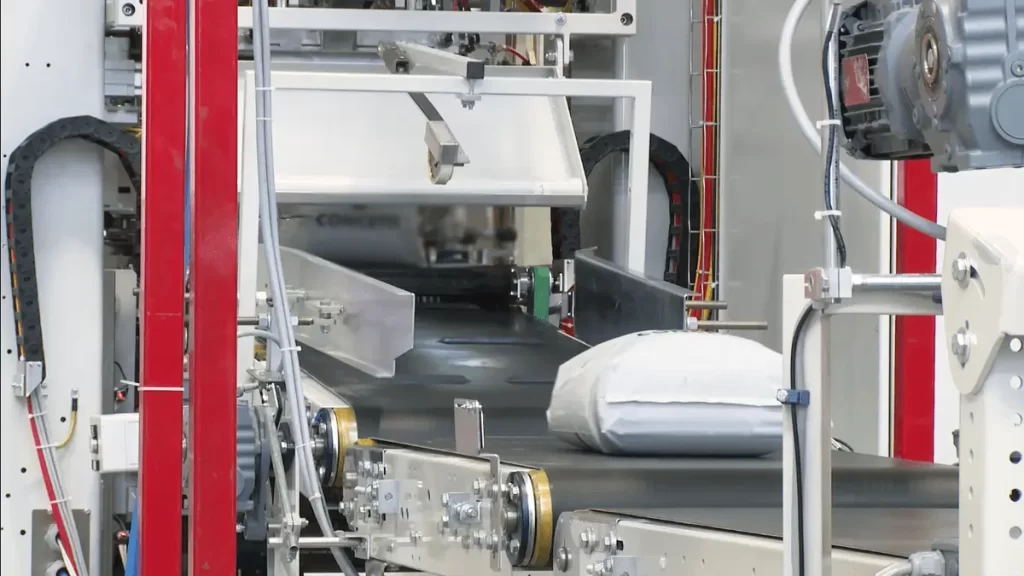How Many Bags of Concrete on a Pallet?


How Many Bags of Concrete on a Pallet?
This article is about “How Many Bags of Concrete on a Pallet”. The primary decision for concrete projects revolves around determining exact material requirements. Buyers who get concrete in bagged form often ask how many bags make up one pallet. A clear understanding of pallet concrete quantity helps users plan their budget as well as handle storage together with transport requirements. This guide provides insight about concrete pallet loading practices including typical pallet contents and purchasing considerations and bulk movement strategies.
Standard Number of Bags of Concrete on a Pallet
40-Pound Bags
80 total bags of concrete weighing 40 pounds should fit optimally on one pallet. Pallet weight constraints do not restrict total capability because the lightweight construction of these storage containers enables greater bag numbers per stack.
50-Pound Bags
50-pound cement bags typically appear on pallets distributed with 64 packages each. The smaller packaging results in fewer items per pallet than bags of 40 pounds due to increased weight but maintains optimal pallet efficiency.
60-Pound Bags
Storage operators typically arrange 60-pound concrete bags in pallets with 56 bags per layout. Project developers choose this weight because it provides adequate mobility and space capacity while meeting both building requirements.
80-Pound Bags
To make a plastic concrete bag pallet each operator handles forty-two 80-pound heavy bags which are the major available weight category. Heavy concrete bags weigh much more than standard building materials do which means these packages need to be spaced further apart when grouped on shipping pallets.
Why Does the Pallet Weight Limit Matter?
A maximum weight specification exists for pallets to ensure both safe handling along with transport operations. Traditionally used pallets have weight capacities ranging from 3,000 to 3,500 pounds. Taking care because anything beyond the weight capacity will make the pallet unstable and create problems when operating forklifts or pallet jacks. To guarantee safe operations during transportation manufacturers determine pallet bag distribution by evaluating both weight and size measurements from the product dimensions.
How to Calculate Total Volume and Coverage
It is useful to know the bag count per pallet but equally essential to determine the materials needed for your project. A good starting point is figuring out exactly how much concrete you need. The measurement units for concrete projects usually consist of cubic feet or cubic yards. A standard formula for calculating volume is:
Volume = Length × Width × Depth (in feet)
The necessary number of bags becomes calculable once you know the cubic feet value and utilize the recorded yield measurements from each bag. Usually, 0.30 cubic feet of concrete can be obtained from one bag that weighs 40 pounds. You can get about 0.45 cubic feet from a single 60-pound bag. One 80-pound concrete bag generates 0.60 cubic feet of usable material. How many bags you need by referring to the yield of each bag. For example:
- A 40-pound bag yields approximately 0.30 cubic feet of concrete.
- A 60-pound bag yields around 0.45 cubic feet.
- An 80-pound bag yields approximately 0.60 cubic feet.
To determine the number of bags needed simply divide your total cubic-foot measurement by each bag’s yield availability. Start by dividing your total volume by the bag yield for each bag before dividing the result by the number of bags per pallet to estimate required pallet quantity.
How Many Pallets Should You Order?
Projects that need substantial concrete volumes yield lower expenses when you place bulk pallet orders compared to bag-by-bag purchases. Pallet bulk purchases allow you to save money by giving discounts while letting you stock up on enough material. A single 80-pound bag produces 0.60 cubic feet. To determine the required number of bags multiply 27 by the inverse of 0.60 giving 45 bags needed. To meet your project requirements you will need at least two pallets because each pallet contains 42 bags.t-effective and efficient than purchasing individual bags. Bulk purchases often come with discounts, and buying by the pallet ensures you’ll have enough material on hand. Here’s an example:
If you need 1 cubic yard of concrete (27 cubic feet) and plan to use 80-pound bags:
• Each 80-pound bag yields 0.60 cubic feet.
• Divide 27 by 0.60 to get 45 bags needed.
• Since there are 42 bags per pallet, you’ll need at least 2 pallets to complete your project.
If you work on small projects, you do not need entire pallets yet understanding the bag quantity on pallets lets you decide between bulk or single purchases.
Factors That Can Affect Pallet Quantities
Several factors can influence the number of concrete bags on a pallet, including:
- Manufacturer Standards: Manufacturers from various brands choose to present their products through diverse packaging methods that leads to slight changes in pallet container capacities.
- Bag Dimensions: Specialty mix types along with irregular bag measurements determine the maximum pallet density of concrete bags.
- Regional Variations: Changes to pallet methods could occur when local suppliers need to meet transportation or storage conditions.
To explore more click on (Concrete Estimating Services).
Tips for Storing and Transporting Pallets of Concrete
Efficient storage and transportation methods must be used to protect both the quality of concrete products and people’s safety during the handling of multiple concrete bags. Here are some tips to keep in mind:
- The sensitivity of concrete bags to moisture exists because cement inside starts to hydrate when it meets water. Storage pallets must remain in dry enclosed spaces on raised platforms that keep them away from soil moisture.
- To safeguard pallets against weather elements, use a heavy-duty tarp when they are outside.
- The transport of concrete pallets needs special equipment including forklifts, pallet jacks and trucks equipped with liftgates to perform movement. Before movement take steps to keep the pallet from tipping or shifting off course.
- Before inserting bags into a concrete delivery system review the bag condition to confirm they haven’t incurred damage that might affect their contents. Effects on concrete mix can result when moisture breaches reduced concrete bags through their damaged surfaces.
Why Knowing Pallet Quantities Matters
The number of concrete bags which occupy a pallet serves multiple significant purposes in construction. The knowledge allows you to prepare an accurate budget because you can estimate quantities precisely. The determination of pallet quantities enables you to organize logistics storage alongside delivery shipment arrangements to allocate necessary storage areas and handling equipment. Additionally, pallet quantity knowledge simplifies interactions with suppliers and contractors through better communication so you receive your materials without delay during the ordering stage.
So, How Many Bags of Concrete on a Pallet? Standard bag configurations for concrete measure up to 42 80-pound bags across one pallet and 80 40-pound bags. You need this information to organize your project and determine costs while planning how to handle both storage areas and delivery logistics. The effective management of materials in building projects depends on your ability to comprehend pallet quantities no matter what size your project happens to be. Your success in the project depends on your careful calculations of what you need backed by supplier verification and prep for receiving deliveries.
You May Love to Read: Can You Pour Concrete in the Rain?

